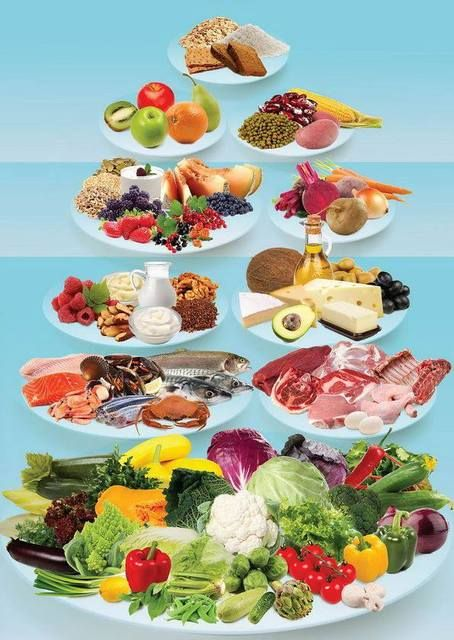
![]() Printable page in A4 size
Printable page in A4 size
![]()
Choosing Nutritious Foods to Eat
It's agreed that people shouldn't need a calculator to decide what to eat. That means, that without a good rule for choosing nutrient-dense foods, what's "good" is a matter of personal opinion.
 |
| Banting Food Pyramid |
|---|
In our own society, people with inadequate income, who buy the cheapest possible food, looking for "bulky foods," something to "fill then up" are likely to buy a lot of bread, potatoes, rice and pasta. They eat something very close to the diet supplied to refugees, but without the 2200 calorie limit. The health effects are the same and worse, malnourished children and obese adults. Excess calories, but undernourished. Over-fed and starving at the same time.
So there's a clue. The most nutrient-dense diet is likely to be exactly the opposite of that.
In 1979, R.G. Hansen et al. was developing a "Nutrition Quality Index of Food." He writes that apart from thiamin, in terms of nutrients "bread, cereals and whole grains are not particularly notable." However, in terms of calories, protein, calcium and iron, this food is cheap. This stands in contrast to the often stated opinion that whole grains are nutrient-packed. This confusion indicates that even today, the science is unreliable and marketing is influencing the messages reaching the public. In trying to develop a "Traffic Light" system for classifying the foods families would buy, H.A. Raynor et al. (2002) wrote that "attempts to classify foods appear arbitrary, tautologous and imprecise."
Here's a clue. In Sweden in 2002, Michels and Wolk, made a set of rules or standards which "healthy foods" would need to meet. They then tested 60 common Swedish foods. The criteria eliminated all foods except rye crisp bread, salmon, herring and some other fish, lettuce, cucumber and tomatoes. That's not very practical. So what is nutritious food? The researchers shared the viewpoint of Supreme Court justice, Potter Stewart, who said; "I know it when I see it." So is that a clue?
When people have more income, what do they eat? That's well researched, they eat more red meat, poultry, and fish. They eat more dairy foods, butter, cheese and eggs. They have more fruit and vegetables and they eat less bread and cereals.
Can we conclude then that without a calculator, and without scientific advice, people do know which foods are nutrient-dense, and if they can afford those foods, they will buy them. However, people do not understand, and don't count as a cost, the future health consequences of buying foods that lack essential nutrients.
Adam Drewnowski, goes on at length trying to identify "Naturally Nutrient Rich" foods. He seems to conclude that meats and dairy foods have the highest nutrient-density. But vegetables supply vitamin C in bioavailable forms. Foods high in vitamin E and B12 are relatively few. The search for low cost food is the root cause of the high-energy low-nutrient problem in the American diet. Fewer than 15% of Americans are eating a diet that supplies adequate amounts of the nutrients recommended.
So now we come back to the Banting Diet. Banting recognises the nutriment value of meat, and the fat on the meat. But also the special value of offal meats, like liver, kidneys and brains, that we've been avoiding, but are full of nutrients and are relatively cheap. Banting also recommends buying bones and making bone broth based soups. Or buy fish-heads and carcasses and make fish soup.
 Dr Zoe Harcombe, is very vocal about the poor quality of much of the "healthy food" we eat. The nutriment value of vegetables and grain is a fraction of the nutriment value of chicken liver, sardines and eggs. People avoid offal meats, perhaps identifying them as strong flavoured. That's right, but that's also the benefit. Low cost to buy, and full of dense nutritional value.
Dr Zoe Harcombe, is very vocal about the poor quality of much of the "healthy food" we eat. The nutriment value of vegetables and grain is a fraction of the nutriment value of chicken liver, sardines and eggs. People avoid offal meats, perhaps identifying them as strong flavoured. That's right, but that's also the benefit. Low cost to buy, and full of dense nutritional value.
Taking up Ted Naiman's point, if you FEED yourself with quality food, you eat less bulky foods, you can use a smaller plate, and you'll eat less often. If the result of that is loss of weight, and better health, we suspect the benefit of a nutrient-dense diet in reduced future health costs will be considerable. How much is an additional year of healthy life worth? Several doctors dealing with older adults tell us that the dividend of a healthy lifestyle and diet is something like ten years of healthy lifespan.
If you eat a poor diet today; the last ten years of your life are likely to be difficult. Getting about will be problematic, and you'll have many aches and pains, if not more serious problems. The solution is to look for foods that are nutrient dense. FEED yourself.
Please choose a screen size to return to the Index.